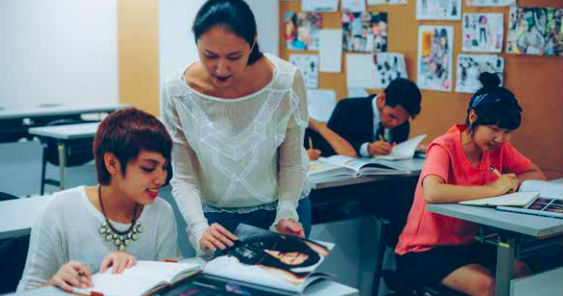by Amanda Lago
MANILA – Formal education in design may have been—and may still be—easily overlooked, but that isn’t an issue for the School of Fashion and the Arts (SoFA) Design Institute, which has been in the business of training young Filipinos in all aspects of the fashion industry for the past eight years.
“Design is a serious business, which we believe deserves a serious education,” SoFA dean, Arch. Tobias Guggenheimer puts it simply, when asked what he thought was the value of having a formal design education.
Design is indeed taken seriously at SoFA.
Founded simply as SoFA in 2007 by Amina Aranaz-Alunan and Loralee Baroon-Soong, themselves graduates of prestigious Italian fashion school Istituto Marangoni, SoFA offers courses that cover everything anyone wanting to break into the fashion industry needs to know. That is to say, a SoFA education doesn’t just cover the creative aspect of fashion, but also the craft and the business sides of it, with courses on Fashion Design, Clothing Technology, and Fashion Marketing.
Today, eight years down the line, SoFA is now the SoFA Design Institute, which has even more diverse academic offerings, including courses in Interior and Accessory Design.
“We are so much more than fashion today – but that is where it all started,” says Guggenheimer, who shares that the biggest challenge in setting up a specialized design college was creating a teaching method that meets global expectations.
“Many of the highest achieving Filipino designers benefited from a foreign education,” Guggenheimer explains. “We wanted to make it possible for our aspiring designers to experience the same level of excellence in training right here at home.”
He shares that their teaching method now combines Western and Asian values: “We therefore expended much effort in building a learning system that integrates Western ideas, like critical thinking, with Asian constructs, like collaborative endeavors. The result is a unique, hybrid environment that is highly relevant to the contemporary design universe.”
Guggenheimer describes the teaching method as one that is “entirely predicated on this proposition – that a designer should confidently be able solve any problem thrown at them.”
Of course, being a design college, there is the added challenge of refining the unique vision of every student, and being careful not to snuff out their creative spark – something that can happen all too often in a formal classroom set up. The school limits its classes to 15 students, to ensure that professors and lecturers have time to mentor every single one.
“There is a danger of homogenization if everyone is trained in the same way – not only in design, but in every other field,” Guggenheimer says.
“That is the potential downside of the modern phenomenon of mass education. At SoFA Design Institute we met that challenge by introducing methods of design exploration that rely on the student’s own unique characteristics: their values, history, and experiences. In this way, our design explorations are always exciting adventures in self-expression.”
At any rate, this carefully crafted method and learning environment seems to prove effective – the current roster of SoFA alumni includes designers that have been getting attention from both local and international audiences.
“We are still a young school and many of our graduates are in the early stages of career development. Many, however, have already been gaining acclaim as designers whose work gets published both locally and abroad. Even before they graduate from their respective programs, students are already immersed in industry projects and competitions that equip them for professional practice,” Guggenheimer explains.
“We are focused on ensuring that our students and graduates are pushing forward into the design world in a manner that will ensure success as they mature into creative professionals,” he continues.
For the design educator, the future of Philippine design looks bright – if the right investments are made. “The Philippines is naturally positioned as a bridge between east and west. From the standpoint of design this means we can, with the proper investments in education, design and manufacturing, prosper in both environments,” he explains. “Otherwise our nation will lag further behind those countries who recognize how design-based industries are fundamental for prosperity.”
He also says that the Philippine design industry “could be more assertive in promoting its capabilities.”
“It is a shame that so many business models are based on importing foreign franchises when we have such a huge talent pool available locally to create and evolve concepts in every field,” he comments.
Great things are certainly in store for the local design industry – the potential just has to be harnessed.
According to Guggenheimer, “We need to make things the world wants and needs. For this we need to nourish a dynamic design ecosystem.”
It goes without saying that a good design education brings the industry one step closer to that vision.








